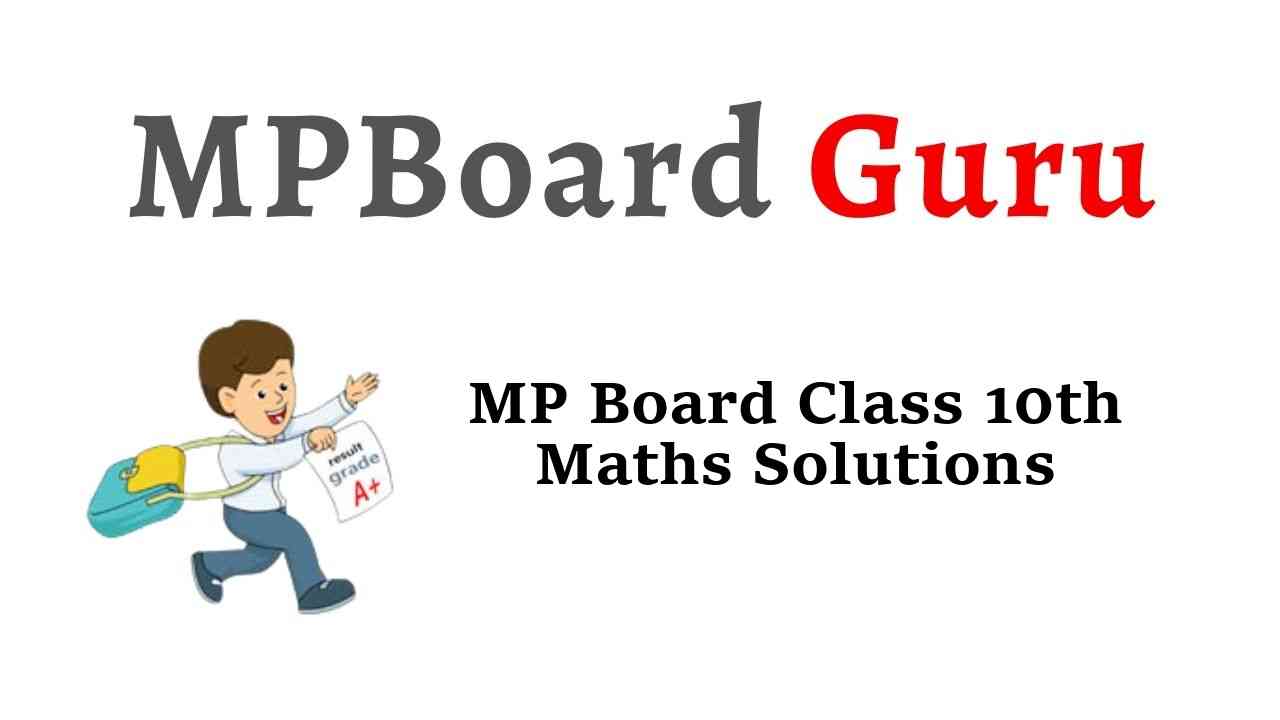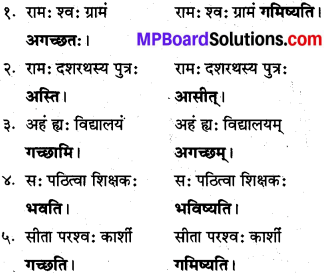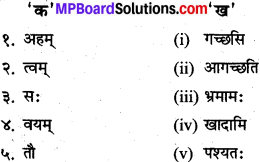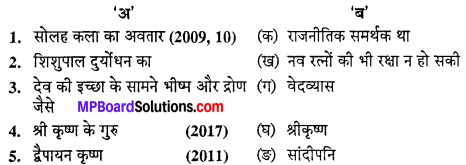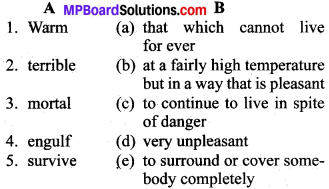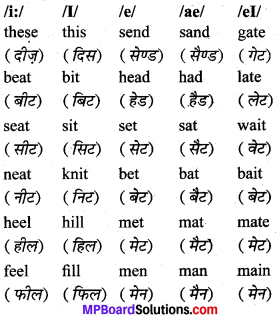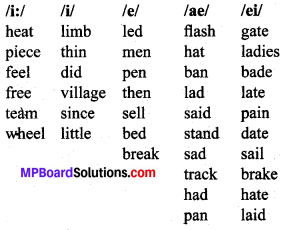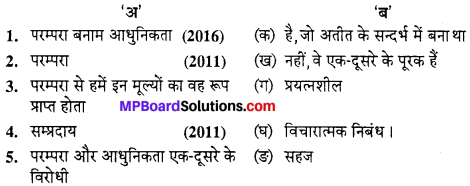MP Board Class 10th Maths Solutions Guide Pdf Free Download गणित in both Hindi Medium and English Medium are part of MP Board Class 10th Solutions. Here we have given NCERT Madhya Pradesh Syllabus MP Board Class 10 Maths Book Solutions Ganit Pdf.
Students can also download MP Board 10th Model Papers to help you to revise the complete Syllabus and score more marks in your examinations.
MP Board Class 10th Maths Book Solutions in Hindi Medium
MP Board Class 10th Maths Chapter 1 वास्तविक संख्याएँ
- Chapter 1 वास्तविक संख्याएँ Ex 1.1
- Chapter 1 वास्तविक संख्याएँ Ex 1.2
- Chapter 1 वास्तविक संख्याएँ Ex 1.3
- Chapter 1 वास्तविक संख्याएँ Ex 1.4
- Chapter 1 वास्तविक संख्याएँ Additional Questions
MP Board Class 10th Maths Chapter 2 बहुपद
- Chapter 2 बहुपद Ex 2.1
- Chapter 2 बहुपद Ex 2.2
- Chapter 2 बहुपद Ex 2.3
- Chapter 2 बहुपद Ex 2.4
- Chapter 2 बहुपद Additional Questions
MP Board Class 10th Maths Chapter 3 दो चरों वाले रैखिक समीकरण युग्म
- Chapter 3 दो चरों वाले रैखिक समीकरण युग्म Ex 3.1
- Chapter 3 दो चरों वाले रैखिक समीकरण युग्म Ex 3.2
- Chapter 3 दो चरों वाले रैखिक समीकरण युग्म Ex 3.3
- Chapter 3 दो चरों वाले रैखिक समीकरण युग्म Ex 3.4
- Chapter 3 दो चरों वाले रैखिक समीकरण युग्म Ex 3.5
- Chapter 3 दो चरों वाले रैखिक समीकरण युग्म Ex 3.6
- Chapter 3 दो चरों वाले रैखिक समीकरण युग्म Ex 3.7
- Chapter 3 दो चरों वाले रैखिक समीकरण युग्म Additional Questions
MP Board Class 10th Maths Chapter 4 द्विघात समीकरण
- Chapter 4 द्विघात समीकरण Ex 4.1
- Chapter 4 द्विघात समीकरण Ex 4.2
- Chapter 4 द्विघात समीकरण Ex 4.3
- Chapter 4 द्विघात समीकरण Ex 4.4
- Chapter 4 द्विघात समीकरण Additional Questions
MP Board Class 10th Maths Chapter 5 समांतर श्रेढ़ियाँ
- Chapter 5 समांतर श्रेढ़ियाँ Ex 5.1
- Chapter 5 समांतर श्रेढ़ियाँ Ex 5.2
- Chapter 5 समांतर श्रेढ़ियाँ Ex 5.3
- Chapter 5 समांतर श्रेढ़ियाँ Ex 5.4
- Chapter 5 समान्तर श्रेढ़ियाँ Additional Questions
MP Board Class 10th Maths Chapter 6 त्रिभुज
- Chapter 6 त्रिभुज Ex 6.1
- Chapter 6 त्रिभुज Ex 6.2
- Chapter 6 त्रिभुज Ex 6.3
- Chapter 6 त्रिभुज Ex 6.4
- Chapter 6 त्रिभुज Ex 6.5
- Chapter 6 त्रिभुज Ex 6.6
- Chapter 6 त्रिभुज Additional Questions
MP Board Class 10th Maths Chapter 7 निर्देशांक ज्यामिति
- Chapter 7 निर्देशांक ज्यामिति Ex 7.1
- Chapter 7 निर्देशांक ज्यामिति Ex 7.2
- Chapter 7 निर्देशांक ज्यामिति Ex 7.3
- Chapter 7 निर्देशांक ज्यामिति Ex 7.4
- Chapter 7 निर्देशांक ज्यामिति Additional Questions
MP Board Class 10th Maths Chapter 8 त्रिकोणमिति का परिचय
- Chapter 8 त्रिकोणमिति का परिचय Ex 8.1
- Chapter 8 त्रिकोणमिति का परिचय Ex 8.2
- Chapter 8 त्रिकोणमिति का परिचय Ex 8.3
- Chapter 8 त्रिकोणमिति का परिचय Ex 8.4
- Chapter 8 त्रिकोणमिति का परिचय Additional Questions
MP Board Class 10th Maths Chapter 9 त्रिकोणमिति के कुछ अनुप्रयोग
- Chapter 9 त्रिकोणमिति के कुछ अनुप्रयोग Ex 9.1
- Chapter 9 त्रिकोणमिति के कुछ अनुप्रयोग Additional Questions
MP Board Class 10th Maths Chapter 10 वृत्त
MP Board Class 10th Maths Chapter 11 रचनाएँ
MP Board Class 10th Maths Chapter 12 वृतों से संबंधित क्षेत्रफल
- Chapter 12 वृतों से संबंधित क्षेत्रफल Ex 12.1
- Chapter 12 वृतों से संबंधित क्षेत्रफल Ex 12.2
- Chapter 12 वृतों से संबंधित क्षेत्रफल Ex 12.3
- Chapter 12 वृतों से संबंधित क्षेत्रफल Additional Questions
MP Board Class 10th Maths Chapter 13 पृष्ठीय क्षेत्रफल एवं आयतन
- Chapter 13 पृष्ठीय क्षेत्रफल एवं आयतन Ex 13.1
- Chapter 13 पृष्ठीय क्षेत्रफल एवं आयतन Ex 13.2
- Chapter 13 पृष्ठीय क्षेत्रफल एवं आयतन Ex 13.3
- Chapter 13 पृष्ठीय क्षेत्रफल एवं आयतन Ex 13.4
- Chapter 13 पृष्ठीय क्षेत्रफल एवं आयतन Ex 13.5
- Chapter 13 पृष्ठीय क्षेत्रफल एवं आयतन Additional Questions
MP Board Class 10th Maths Chapter 14 सांख्यिकी
- Chapter 14 सांख्यिकी Ex 14.1
- Chapter 14 सांख्यिकी Ex 14.2
- Chapter 14 सांख्यिकी Ex 14.3
- Chapter 14 सांख्यिकी Ex 14.4
- Chapter 14 सांख्यिकी Additional Questions
MP Board Class 10th Maths Chapter 15 प्रायिकता
MP Board Class 10th Maths Book Solutions in English Medium
MP Board Class 10th Maths Chapter 1 Real Numbers
- Chapter 1 Real Numbers Ex 1.1
- Chapter 1 Real Numbers Ex 1.2
- Chapter 1 Real Numbers Ex 1.3
- Chapter 1 Real Numbers Ex 1.4
MP Board Class 10th Maths Chapter 2 Polynomials
- Chapter 2 Polynomials Ex 2.1
- Chapter 2 Polynomials Ex 2.2
- Chapter 2 Polynomials Ex 2.3
- Chapter 2 Polynomials Ex 2.4
MP Board Class 10th Maths Chapter 3 Pair of Linear Equations in Two Variables
- Chapter 3 Pair of Linear Equations in Two Variables Ex 3.1
- Chapter 3 Pair of Linear Equations in Two Variables Ex 3.2
- Chapter 3 Pair of Linear Equations in Two Variables Ex 3.3
- Chapter 3 Pair of Linear Equations in Two Variables Ex 3.4
- Chapter 3 Pair of Linear Equations in Two Variables Ex 3.5
- Chapter 3 Pair of Linear Equations in Two Variables Ex 3.6
- Chapter 3 Pair of Linear Equations in Two Variables Ex 3.7
MP Board Class 10th Maths Chapter 4 Quadratic Equations
- Chapter 4 Quadratic Equations Ex 4.1
- Chapter 4 Quadratic Equations Ex 4.2
- Chapter 4 Quadratic Equations Ex 4.3
- Chapter 4 Quadratic Equations Ex 4.4
MP Board Class 10th Maths Chapter 5 Arithmetic Progressions
- Chapter 5 Arithmetic Progressions Ex 5.1
- Chapter 5 Arithmetic Progressions Ex 5.2
- Chapter 5 Arithmetic Progressions Ex 5.3
- Chapter 5 Arithmetic Progressions Ex 5.4
MP Board Class 10th Maths Chapter 6 Triangles
- Chapter 6 Triangles Ex 6.1
- Chapter 6 Triangles Ex 6.2
- Chapter 6 Triangles Ex 6.3
- Chapter 6 Triangles Ex 6.4
- Chapter 6 Triangles Ex 6.5
- Chapter 6 Triangles Ex 6.6
MP Board Class 10th Maths Chapter 7 Coordinate Geometry
- Chapter 7 Coordinate Geometry Ex 7.1
- Chapter 7 Coordinate Geometry Ex 7.2
- Chapter 7 Coordinate Geometry Ex 7.3
- Chapter 7 Coordinate Geometry Ex 7.4
MP Board Class 10th Maths Chapter 8 Introduction to Trigonometry
- Chapter 8 Introduction to Trigonometry Ex 8.1
- Chapter 8 Introduction to Trigonometry Ex 8.2
- Chapter 8 Introduction to Trigonometry Ex 8.3
- Chapter 8 Introduction to Trigonometry Ex 8.4
MP Board Class 10th Maths Chapter 9 Some Applications of Trigonometry
MP Board Class 10th Maths Chapter 10 Circles
MP Board Class 10th Maths Chapter 10 Chapter 11 Constructions
MP Board Class 10th Maths Chapter 12 Areas Related to Circles
- Chapter 12 Areas Related to Circles Ex 12.1
- Chapter 12 Areas Related to Circles Ex 12.2
- Chapter 12 Areas Related to Circles Ex 12.3
MP Board Class 10th Maths Chapter 13 Surface Areas and Volumes
- Chapter 13 Surface Areas and Volumes Ex 13.1
- Chapter 13 Surface Areas and Volumes Ex 13.2
- Chapter 13 Surface Areas and Volumes Ex 13.3
- Chapter 13 Surface Areas and Volumes Ex 13.4
- Chapter 13 Surface Areas and Volumes Ex 13.5
MP Board Class 10th Maths Chapter 14 Statistics
- Chapter 14 Statistics Ex 14.1
- Chapter 14 Statistics Ex 14.2
- Chapter 14 Statistics Ex 14.3
- Chapter 14 Statistics Ex 14.4
MP Board Class 10th Maths Chapter 15 Probability
We hope the given MP Board Class 10th Maths Solutions Guide Pdf Free Download गणित in both Hindi Medium and English Medium will help you. If you have any query regarding NCERT Madhya Pradesh Syllabus MP Board Class 10 Maths Book Solutions Ganit Pdf, drop a comment below and we will get back to you at the earliest.
